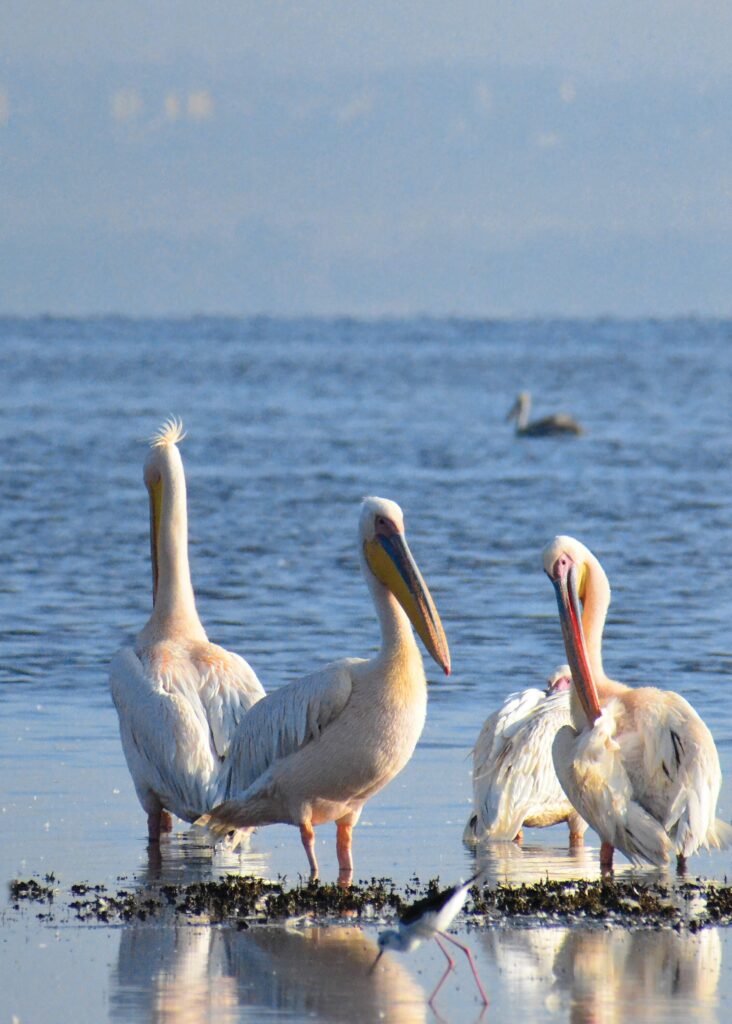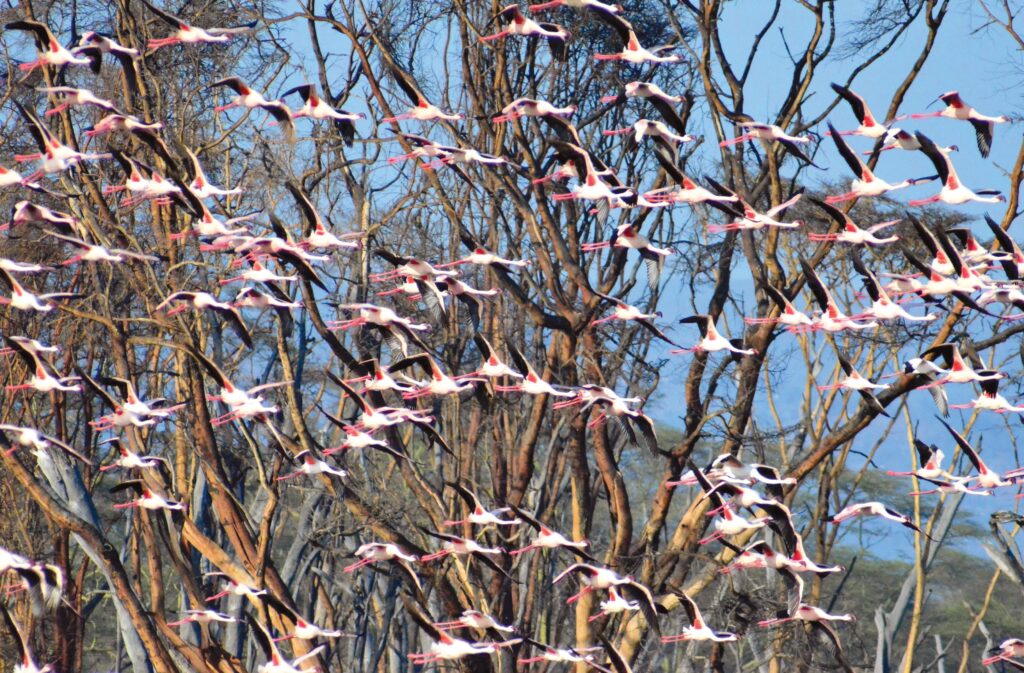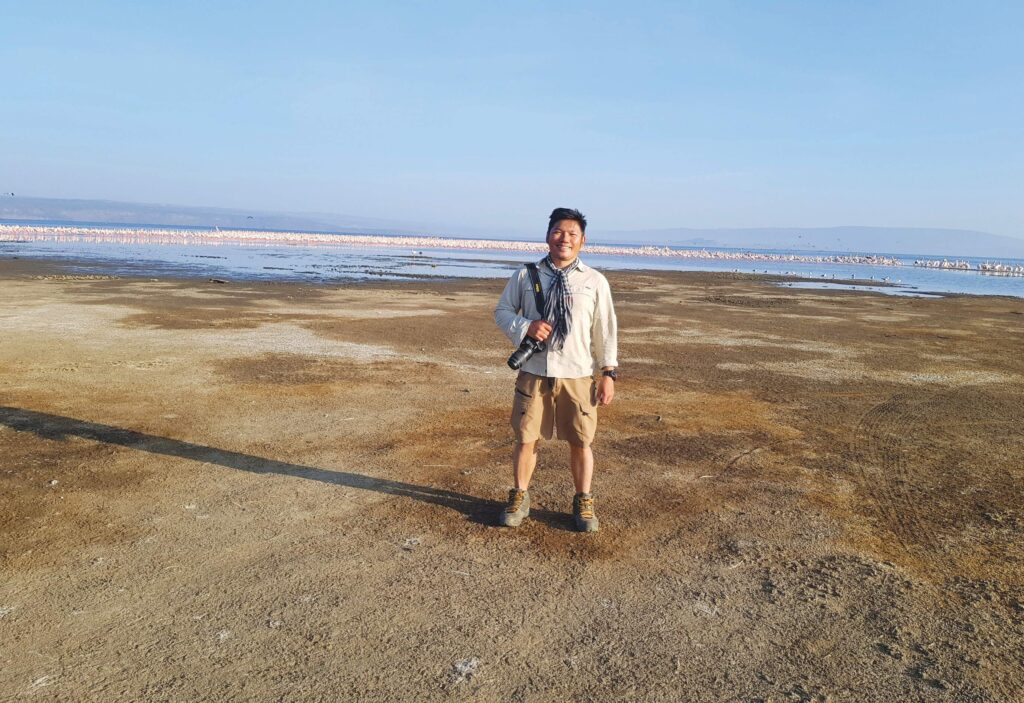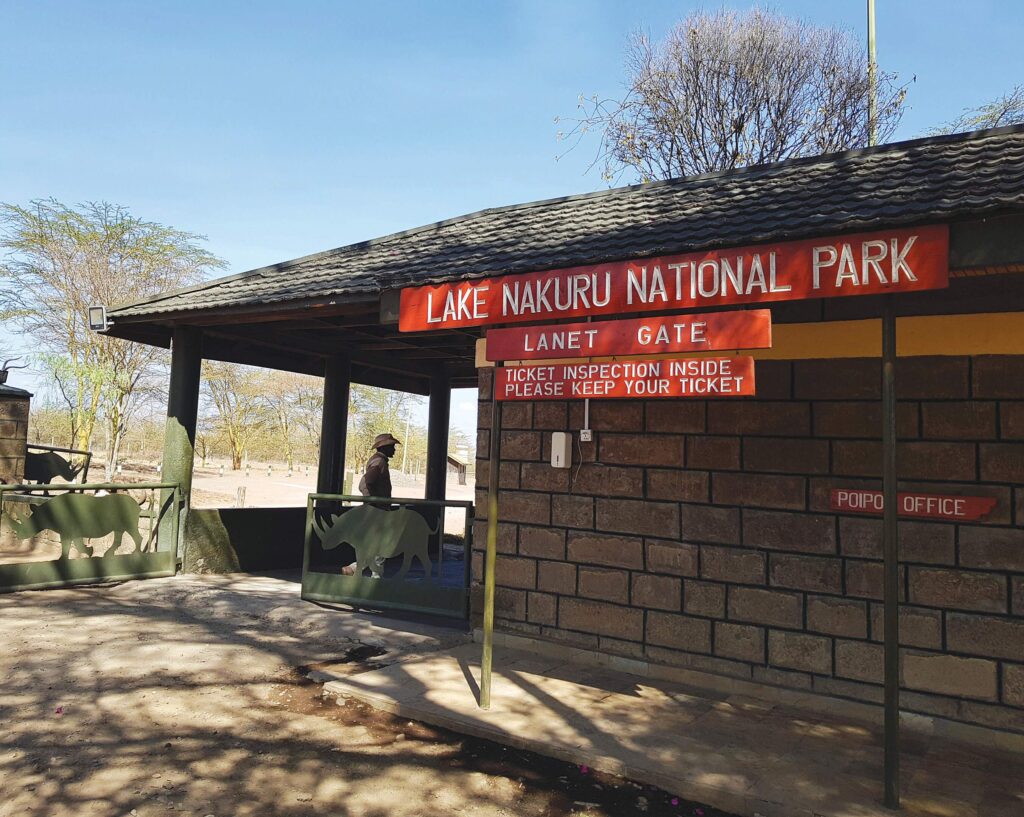I always thought going around on safari meant wearing short-sleeved khakis and shorts. I’m all bundled up in a heavy jacket used to climb the frozen slopes of Mount Kilimanjaro and I’m still freezing.
SLEEPY START
I arrived in Kenya last night. After two hours of much-needed shuteye, we immediately embarked on our journey to see the famed Flamingos of Lake Nakuru. We left at 3 AM. It’s nearly 6 AM and we’re parked in front of the main gate, the savannah in front of us, with Nakuru City behind. Early Birds, we’re the first and seemingly the only customers on this quiet, cold morning.
Park rangers, in full camouflage gear and menacing HK G3 rifles, sleepily sip their coffee. Just 50 meters behind them, through a shiny chain link fence, graze a herd of hefty Cape Buffalo. With zero coffee and nothing to do, I doze off.
The Rover’s engine starts up, jolting me awake. The rangers, grinning and less sleepy, open the gates. We’re off!
PINK SHORES
It’s a bumpy, bumpy ride on a twisty clay track. The sun starts peeking out of the horizon. We stop for a while to photograph Zebra, Buffalo, and a troop of Baboons who get way too close to our Rover. But we didn’t come here for them.
More bumpy minutes and we finally approach the lake, still shrouded in the morning mist. It looks pretty much like a regular lake… except the shores on our side are completely pink.
Squawking for a hundred yards on our flanks are tens of thousands of pink Flamingos. Finally, we meet the stars of Lake Nakuru National Park.
WHY ARE THEY PINK?
Aside from being colorful swimming pool inflatables, flamingos are wading birds who thrive in shallow water lakes throughout the world. There are six species in all, with two inhabiting Africa.
The pinkish color of Flamingo plumage comes from carotenoids in aquatic organisms such as brine Shrimp or cyanobacteria upon which the Birds feed, according to a 2015 study by Kyuung June Yim and colleagues.
SODA LAKE MAINSTAYS
The best place to see them is Lake Nakuru, a high-altitude soda lake (for us science geeks, an alkaline lake with a pH ranging from 9 to 12) located in west central Kenya in Africa’s Rift Valley Region.
The lake is renowned for hosting over a million greater and lesser Flamingos, who visit the lake to feed on algae and Invertebrates during the rainy season when fresh nutrients spur algal growth.
When the rains don’t come due to a drought, or when the lake’s water level rises too high for algae to grow, the Flamingos leave it to feed at other soda lakes like Lakes Baringo, Oloiden, and Bogoria.
“They haven’t been spotted in Lake Nakuru for over eight years owing to higher than usual lake water levels, but wildlife-wise, I guess you are pretty lucky,” says our chuckling guide while scanning the lake for other water Birds like Storks, Cormorants, and Pelicans.

Standing impassively are Great White Pelicans (Pelecanus onocrotalus), who feed on the lake’s ultra-hardwater Cichlids. (Gregg Yan) 
Marabou Storks (Leptoptilos crumenifer) are included in “Africa’s Ugly Five” list – the five ugliest animals across the African continent. Personally, I thought they looked rather beautiful. (Gregg Yan) 
After a while, the Flamingos started stirring and flying all around us. It was quite the spectacle. (Gregg Yan)
PINK SPECTACLE
We disembark to stretch our legs, quietly and peacefully approaching the Birds to snap pictures. Truly unique habitats, Africa’s soda lakes are unexpectedly productive: Though few large critters like Fishes and Shrimp swim in them, the lakes mix up a rich soup of algae, fungi, and bacteria which sustains – and gives a rosy glow to – Flamingos.
After a few precious minutes, we hear the all-too-familiar sound of revving engines. Glancing behind, we see from a mile away, Park Customer Number Two. Even from afar, we can hear the Rover’s guests chattering away. As they race toward the lake, the Flamingos take notice, begin to stir – and finally fly off.
Though saddened to see the Birds disturbed, seeing tens of thousands of them painting the sky pink is probably the greatest birdwatching spectacle I’ve yet seen. As we start up the engines to leave, we wave a grateful goodbye. Eventually, the Birds start descending back to the lake.
Over bumpy, bumpy roads we drive off into the sunrise, a pink lake behind us.










